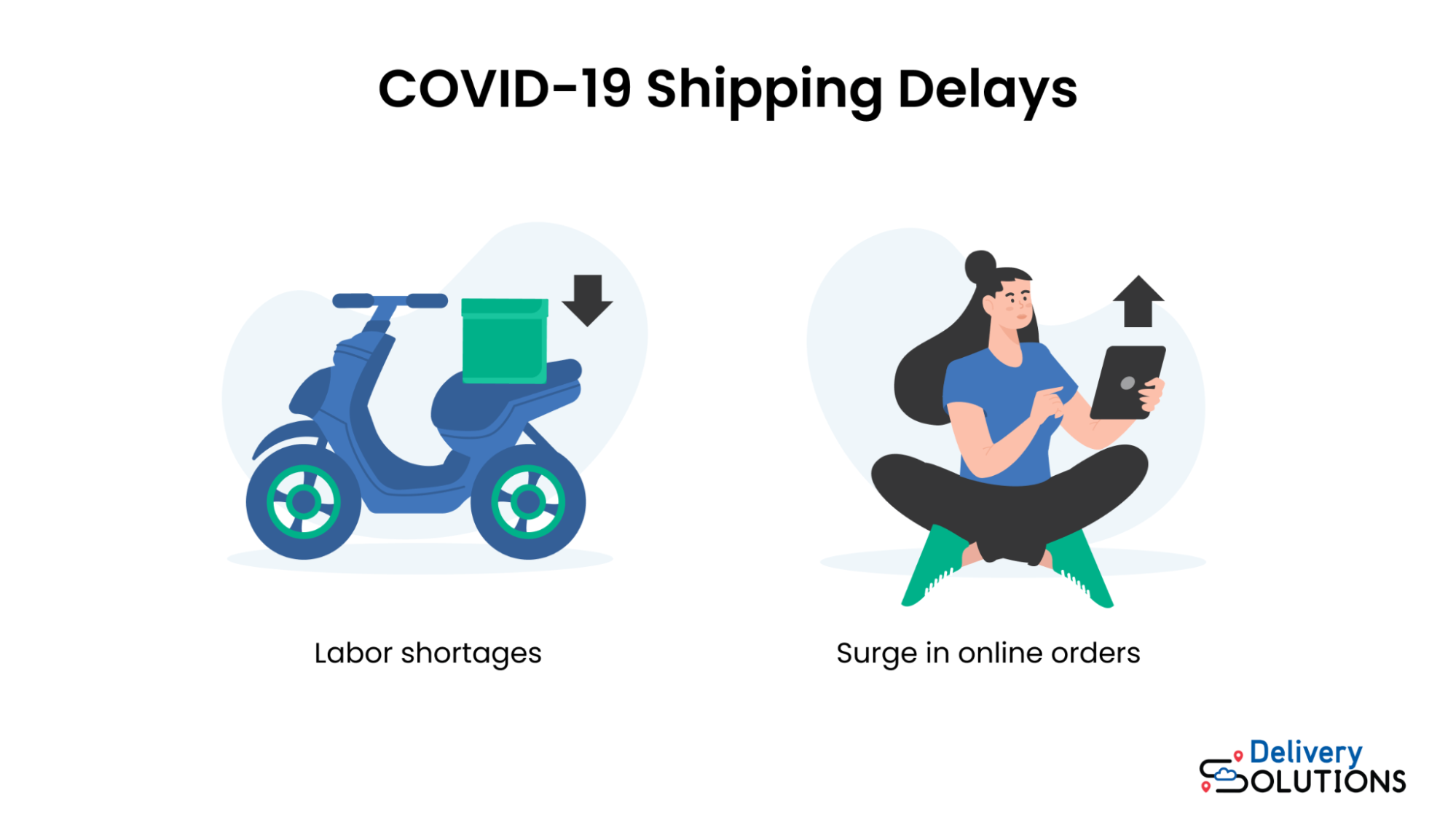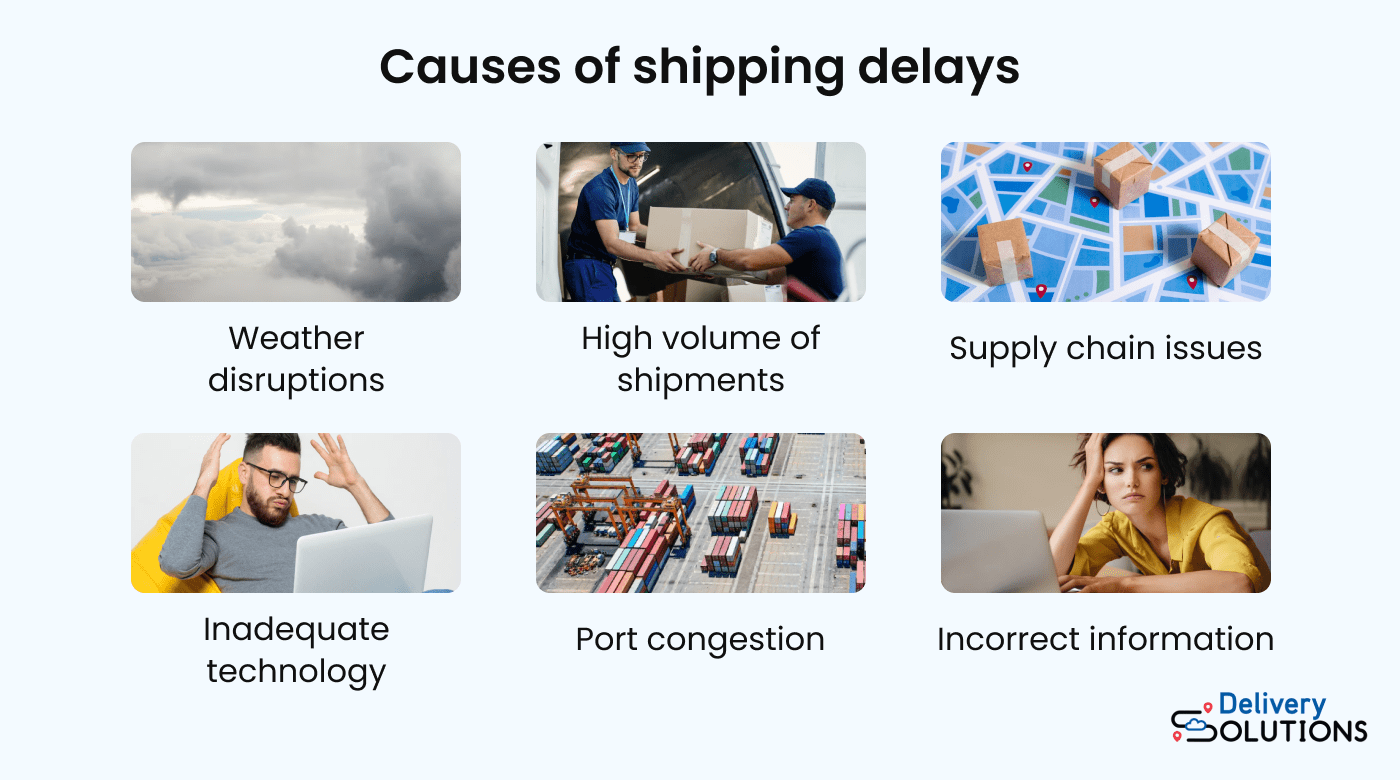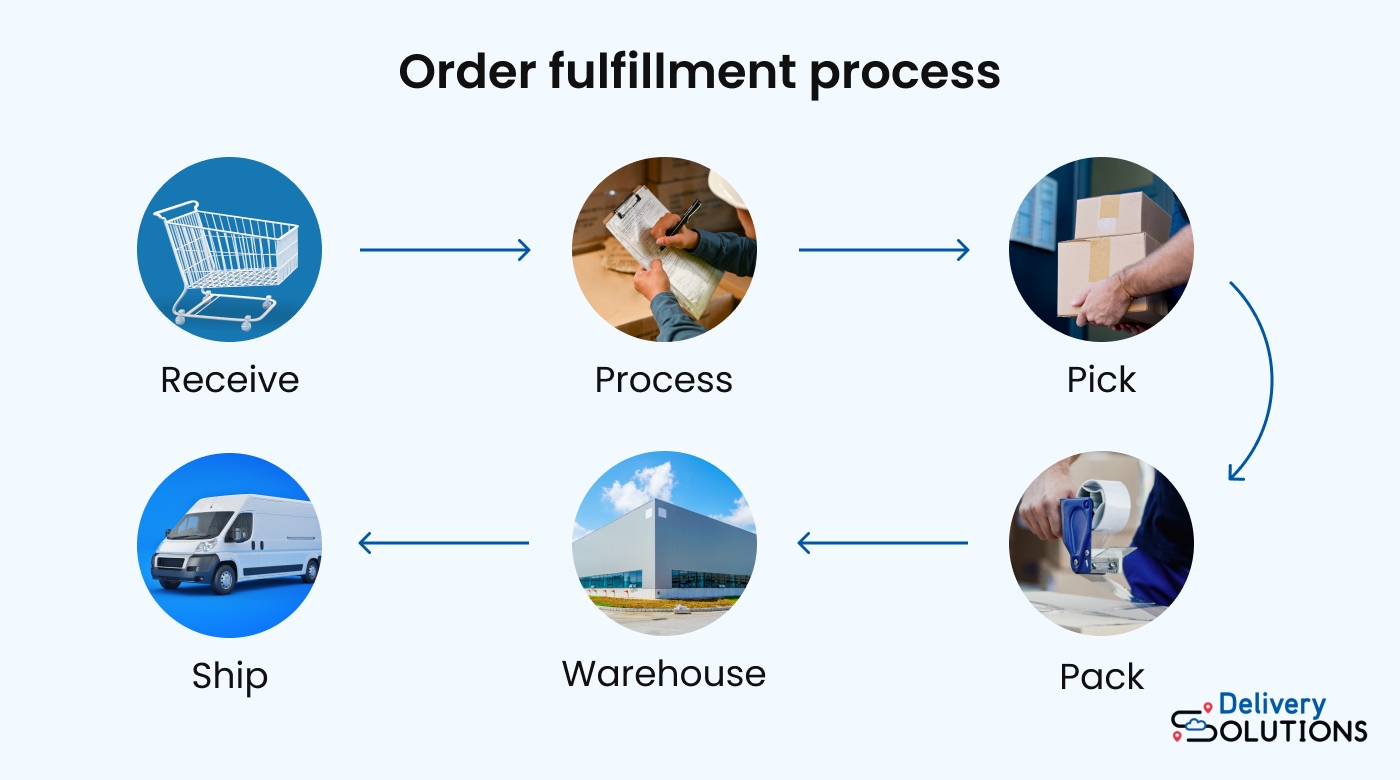Retailers are no strangers to shipping delays. Extreme weather conditions and peak holiday seasons can sometimes cause delays beyond your control.
But over the last few years, a series of unprecedented events — especially the COVID-19 pandemic and the Russia-Ukraine conflict — have caused a global shipping crisis that continues to affect retailers and consumers.
From supply chain issues to labor shortages and shifting consumer buying habits, today’s retailers have to navigate a number of obstacles that get in the way of successful delivery.
This article will shed light on what causes shipping delays and how they affect retailers. We’ll also look at how you can manage them effectively.
Why is shipping taking so long now?
Over the last few years, extraordinary circumstances have caused record-breaking shipping delays that have plagued retailers and eCommerce sellers.
The COVID-19 pandemic has had a significant impact on domestic and international shipping. As lockdowns kept consumers from making purchases in-store, they turned to eCommerce, causing a surge in online orders. This changing consumer behavior toward digital shopping, which is likely here to stay, has had a profound effect on retailers.
With demand for shipping goods skyrocketing, there was a “scarcity of shipping capacity,” as Fernando Leibovici, senior economist at the Federal Reserve Bank of St. Louis, explains. The infrastructure to support the sudden increase in international shipping wasn’t there yet. As a result, most retailers faced increased delays and higher shipping costs.

COVID-19 also caused a major disruption in the labor force.
At the peak of the pandemic, many workers were either too sick or afraid to come to work, causing a labor shortage. As restrictions began to ease, 47 million workers left their jobs in search of better work. “The Great Resignation” caused industries like wholesale and retail trade to experience some of the highest labor shortages in history.
The ongoing Russia-Ukraine war is becoming more of a burden on the global shipping industry — 85% of small and midsize businesses (SMBs) will be or have already been impacted by the war. Port closures in the Black Sea and trade sanctions with Russia are causing a major strain on global supply chains.
Other common causes of shipping delays
While the last few years saw an unprecedented shipping crisis due to multiple factors, there are also other, more common causes of shipping delays.
1. Weather disruptions
Severe weather, like snowstorms, high winds, icy roads, and natural disasters, is one of the most common causes of shipping disruptions. Changes in weather are unfortunately unavoidable and can cause unsafe road conditions, power outages, and capacity limitations.
Recently, Hurricane Ian caused shipping delays in Florida, forcing delivery providers like UPS to temporarily pause pickups and deliveries.
2. High shipment volumes
During the holiday season, the number of orders and shipments skyrockets. A surge in customer orders puts a lot of strain on retailer supply chains and logistics networks.
Christmas is by far the busiest season for retailers. Customers’ orders drastically increase in number, exceeding delivery capacity. At the same time, shoppers want to ensure that their orders arrive before Christmas day — which means businesses are also working under tight deadlines.
3. Supply chain issues
Supply chain issues have been one of the biggest challenges for retailers over the past few years. In 2021, 44% of major brands reported that supply chain issues were affecting their existing inventory, while 38.8% of small businesses in the US experienced supply chain disruptions and delays. These disruptions have increased costs and reduced sales for numerous businesses.
Global supply chains are facing many challenges as a result of the pandemic. Most significantly, trade lanes between Asia and Europe and Asia and North America have been severely impacted, leading to delays and equipment shortages. Shipping delays from China to the US have increased fourfold since the end of March.
In 2021, the infamous container vessel that became stuck in the Suez Canal created a shipping traffic jam that put even more strain on global supply chains. The massive vessel blocked the canal, preventing hundreds of other carriers from passing through. This incident caused major delays, holding up as much as $10 billion of cargo per day.

4. Inadequate technology
Antiquated software is another common reason for shipment delays. An outdated, manual order management system (OMS) can’t efficiently manage and track orders and shipments, and this causes unnecessary delivery issues.
Investing in the right software can remove many inefficiencies that lead to delays.
5. Port congestion
Port congestion has been a major cause of shipping delays for US retailers in 2022. An influx of imported goods and labor shortages are among the leading reasons US ports are facing severe congestion.
Eight of the ten largest US ports face an average congestion of seven days. Congested ports can cause inventory shortages and disrupt delivery times.
6. Incorrect information
Human error and preventable mistakes can easily cause shipping delays. Filling out paperwork incorrectly or a lack of proper documentation can lead to delays, especially when you’re shipping internationally.
Customs can hold your packages for simple oversights, like blurry writing or incorrect shipping labels. Until the correct information is provided, your merchandise will be at a standstill — significantly impacting your supply chain.
How shipping delays impact retailers
Shipping delays can cause a lot of problems for retailers of all sizes, especially as the holiday season approaches. When these delays are inevitable and consumer demand is at its peak, retailers pay the price in more ways than one.

Let’s take a closer look.
Lost revenue
Shipping delays can cost retailers a significant amount of money.
As many as 93% of Amazon sellers lost revenue in 2021 because of supply chain challenges that caused delays. After ordering inventory from suppliers, many sellers said they’ve experienced delays that lasted longer than one month.
Shipment delays can often lead to stockout costs — the money lost when a customer can’t buy something because it’s not in stock. Last year, retailers in the consumer packaged goods (CPG) industry lost out on 7.4% of sales due to stockouts, costing them $82 billion in missed revenue.
Stockouts can drive customers straight into the arms of a competitor. When they can’t buy the item they want from your online store, they’ll likely buy it from a competitor who has it in stock.
Inventory delays also lead to longer-than-usual delivery times, which affect customer conversion rates. Slow delivery is the third-highest cause of cart abandonment during checkout among shoppers. Quick turnaround times, like same-day delivery, have become an expectation for online shoppers. ECommerce retailers who can’t meet these expectations experience higher rates of cart abandonment and revenue loss.
Customer churn
Late shipments will also have a direct impact on customer retention. Over half of consumers say they’d stop buying from a brand entirely after one to three supply chain delays or disruptions.
Customer churn has a significant impact on your business, as it lowers profits and leads to stagnation. Not only does losing customers translate to lower sales, but the cost of attracting new customers is much higher than keeping your existing ones.
Damage to brand reputation
While most Americans are aware that supply chain issues exist, they won’t be sympathetic if their customer experience is substandard. Customers want retailers to take responsibility for these delays and deliver a frictionless customer experience. If you don’t, customers will quickly lose trust in your brand.
Unhappy costumes often share their experiences and dissatisfaction on social media by leaving online reviews or through word of mouth. For example, if a customer receives their package later than expected, they’ll likely be disappointed and may leave a negative review on your website. Negative feedback can damage your brand reputation and dissuade potential customers from shopping with you.
How to mitigate shipping delays
Avoiding shipping delays in 2022 is impossible, even for the savviest of retailers. However, there are steps you can take to manage shipping delays and reduce the impact they’ll have on your business and customer experience.

Here’s how you can manage shipping delays.
Plan for peak periods
Retailers will always experience spikes in sales during peak periods, like holidays or major sales. Anticipating a high volume of orders and planning ahead accordingly will help you significantly reduce delays and keep customers happy.
Shipment delays from suppliers during peak periods often lead to inventory shortages that impact your customers. Avoid shipping goods during this time as much as possible, and stock up on inventory in advance.
Look at past trends to predict the most in-demand goods and prioritize their shipment so that you can replenish them ahead of time to fulfill customer orders.
Be transparent with customers
When you anticipate shipment delays, be transparent and proactively communicate those delays with your customers as soon as possible.
Almost 94% of consumers say they expect companies to notify them about delays without having to ask about them. When you’re honest about delays and provide a valid reason for them, customers are typically more understanding and manage their expectations accordingly.
Most customers want alerts about delays and backorders before they check out or make a purchase. Something as simple as sending email updates or adding notices to product pages to let customers know a certain product will experience delays goes a long way.
After a customer places an order, keep them in the loop by sending them a confirmation email, SMS updates, and live shipment tracking ability. Consistent order-related communication throughout the post-purchase experience improves customer loyalty and reduces the number of failed delivery attempts.
Invest in an efficient delivery network
Investing in better technology can easily prevent some delays. Consider using software that automates and streamlines your entire order fulfillment process. Automating everything from inventory management to shipments eliminates human error and speeds up the delivery process.

For example, you can automatically generate paperwork, like shipping labels, for your shipments without having to manually write them yourself. This feature reduces preventable delays in your shipments caused by incorrect information.
If you’re shipping with Delivery Solutions, you can rest assured that the entire delivery experience will be orchestrated smoothly to prevent delays. Delivery Solutions optimizes your warehouse operations and removes unnecessary steps in the shipping process, increasing delivery efficiency. Using our services, you can meet the rapidly changing needs of your customers with same-day delivery capabilities and real-time order tracking.
Consider multiple carriers
If you’re a large or growing retailer or eCommerce company, working with only one carrier to deliver parcels can slow down your shipments.
Consider partnering with a delivery provider that offers your customers a variety of convenient shipping options. This can help you avoid delays and reduce shipping times.
Delivery Solutions gives you instant access to a leading multi-provider network under one connectivity tool. You’ll also get multiple delivery options, like in-store pickup or curbside pickup. You can select the best provider for the job based on your service needs and each customer’s location and preferences.
Curbside pickup is becoming an increasingly popular delivery choice for customers. Delivery Solutions uses SaaS technology to help deliver a frictionless curbside experience by:
- Enabling customers to choose specific pickup times and locations
- Sending real-time updates
- Providing direct access to support
- Giving customers the option to delay pickup times via text or chat
A multi-carrier network reduces shipping delays and meets customers where they are.
Minimize the impact of shipping delays on your business
Shipping delays will continue to affect eCommerce and physical retailers in the years to come.
Finding ways to mitigate these delays is vital to keeping customers happy, upholding your brand’s reputation, and preventing revenue loss.
Enlisting the help of a powerful platform like Delivery Solutions will help you minimize the impact that shipping delays have on your retail business. Schedule a personalized demo today to learn how we can help you succeed.
Delivery Solutions orchestrates fulfillment experiences for enterprise retailers, supplying flexible optionality for consumers and priming merchants for innovation at scale.
Ryan Caldarone
Ryan is a Sr. Digital Marketing Manager with over ten years of experience in B2B eCommerce, specializing in brand storytelling and content. Having contributed to hundreds of creative projects for SMBs and startups across the tech, energy, and fine arts sectors, Ryan brings diverse perspectives.
Topics from this blog: Improvement Shipping
